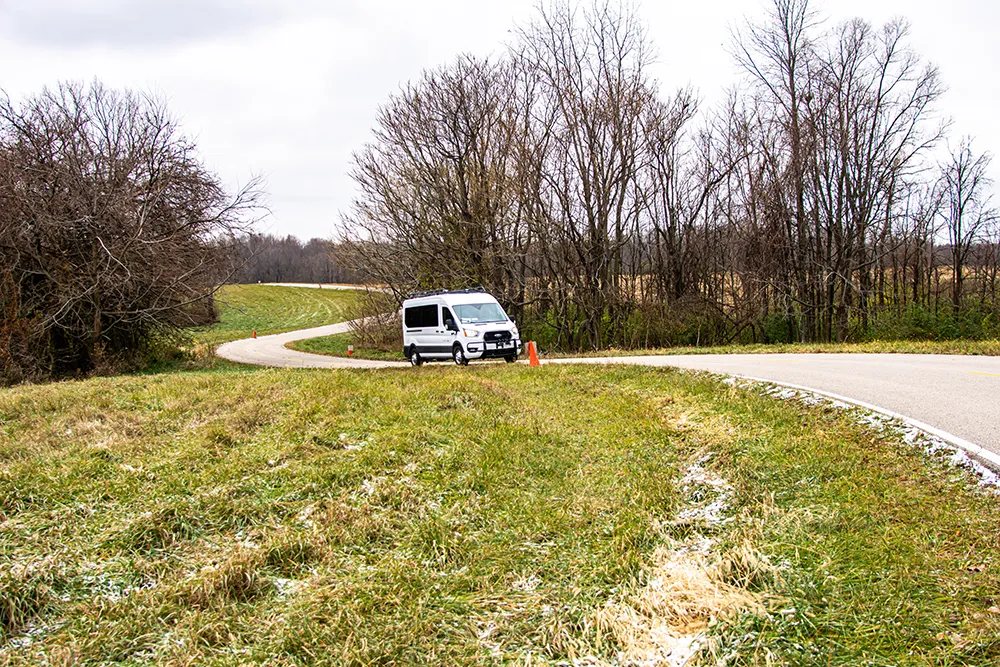Private sector operator, Transurban, operators of Virginia’s I-495 express lane, has unveiled the highway’s incident management centre where the flow of vehicles will be monitored on a widescreen monitor displaying a dozen camera angles. The new lanes are expected to open by the end of fall. The centre will monitor traffic volume 24/7 in order to compute toll rates. The new roadway, connecting the Dulles toll road to the I-395/I-95/Springfield interchange fourteen miles to the south, will charge drivers dyn
October 19, 2012
Read time: 2 mins
Private sector operator, 600 Transurban, operators of Virginia’s I-495 express lane, has unveiled the highway’s incident management centre where the flow of vehicles will be monitored on a widescreen monitor displaying a dozen camera angles. The new lanes are expected to open by the end of fall.
The centre will monitor traffic volume 24/7 in order to compute toll rates. The new roadway, connecting the Dulles toll road to the I-395/I-95/Springfield interchange fourteen miles to the south, will charge drivers dynamic tolls, meaning the price will change depending on traffic volume; the more traffic, the higher the toll.
Transurban is required to keep traffic moving at least 45 mph, so if traffic slows due to heavy volume, tolls will be significantly increased to deter further drivers. Transurban invested US$1.5 billion into the lanes as part of a public-private partnership with Virginia, and will receive toll revenues for the next 75 years.
“Detector stations will be placed every three miles to provide the control centre with information on the volume and speed of traffic,” said Transurban operations manager Rob Kerns. “Our dynamic pricing is scheduled to update every fifteen minutes.”
Transurban has not released precise toll rates because of the dynamic nature of the pricing system. Moreover, once the highway opens, staff will need some time to determine what rates work best.
“The tolls are set minute to minute based on what’s actually happening out there. We won’t know until the road opens how drivers are reacting to different toll prices,” said Jennifer Aument, a project spokeswoman.
The average toll will be between US$3 and US$6 during busy periods, said Aument, who said the express lanes are designed for use a couple of times a week when drivers need a dependable journey. The new lanes will run parallel to 495’s regular travel lanes that often carry bumper-to-bumper traffic.
The centre will monitor traffic volume 24/7 in order to compute toll rates. The new roadway, connecting the Dulles toll road to the I-395/I-95/Springfield interchange fourteen miles to the south, will charge drivers dynamic tolls, meaning the price will change depending on traffic volume; the more traffic, the higher the toll.
Transurban is required to keep traffic moving at least 45 mph, so if traffic slows due to heavy volume, tolls will be significantly increased to deter further drivers. Transurban invested US$1.5 billion into the lanes as part of a public-private partnership with Virginia, and will receive toll revenues for the next 75 years.
“Detector stations will be placed every three miles to provide the control centre with information on the volume and speed of traffic,” said Transurban operations manager Rob Kerns. “Our dynamic pricing is scheduled to update every fifteen minutes.”
Transurban has not released precise toll rates because of the dynamic nature of the pricing system. Moreover, once the highway opens, staff will need some time to determine what rates work best.
“The tolls are set minute to minute based on what’s actually happening out there. We won’t know until the road opens how drivers are reacting to different toll prices,” said Jennifer Aument, a project spokeswoman.
The average toll will be between US$3 and US$6 during busy periods, said Aument, who said the express lanes are designed for use a couple of times a week when drivers need a dependable journey. The new lanes will run parallel to 495’s regular travel lanes that often carry bumper-to-bumper traffic.










